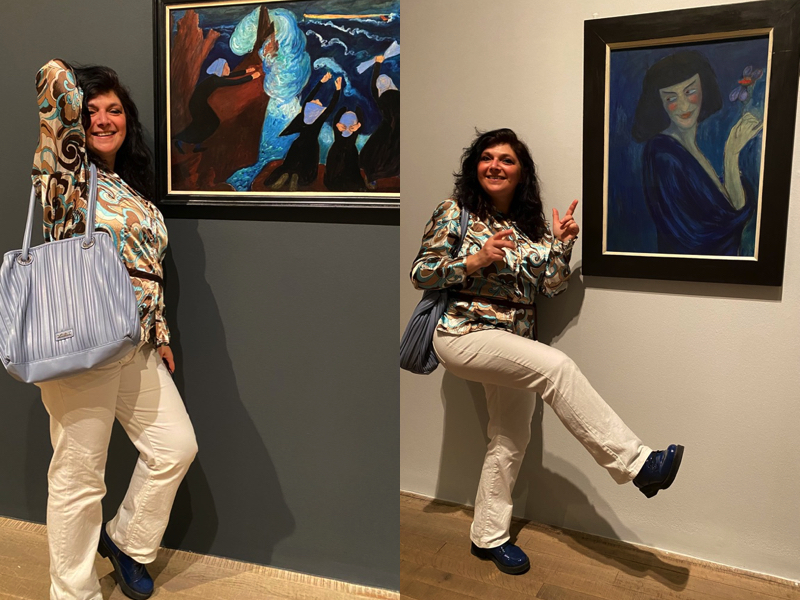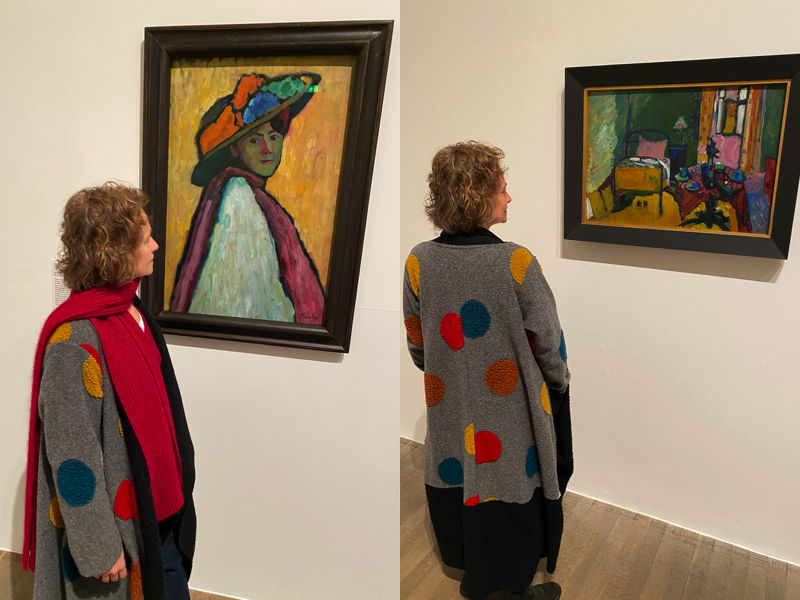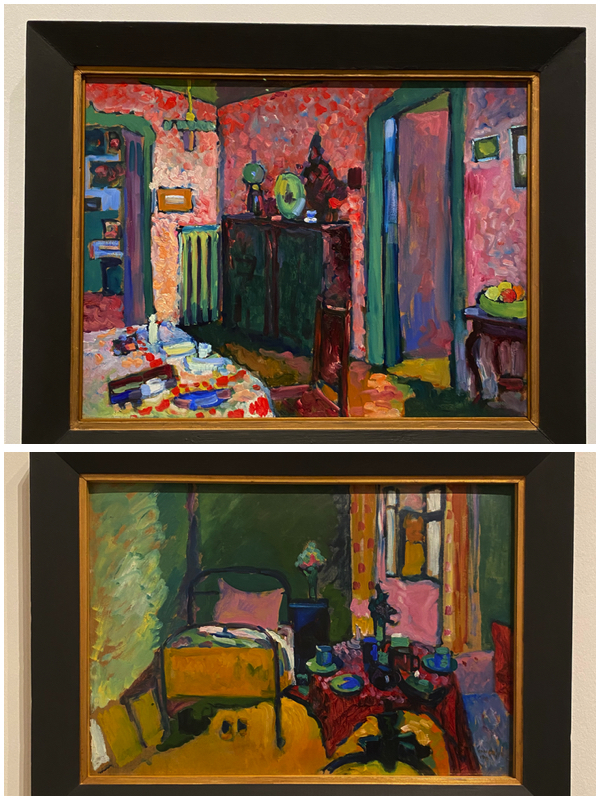Expressionism stands out as a vivid and unforgettable part of European art history, embodying the creative visions of its top artists. In Tate Modern‘s colourful exhibition Expressionists – Kandinsky, Münter and The Blue Rider about the famous group of avant-garde artists, who worked in Munich and the Bavarian Alps before the chaotic First World War, there’s a slight feeling of unease.

Photo: Wassily Kandinsky Improvisation Gorge (1914) – Credit: Lenbachhaus Muenchen
The exhibition starts with the Blue Rider collective’s core couple, Wassily Kandinsky and Gabriele Münter. We then follow like-minded artists from Eastern and Western Europe and the USA as they connect in Munich, engaging in collaborative work. Exploring the key concerns at the heart of their creative experimentation, later rooms are dedicated to spirituality, sonic perception and colour theory. Culminating in the legacies of the Blue Rider artists, Expressionists presents the lasting influence of a transnational artistic collective.
We were only a group of friends who shared a common passion for painting as a form of self-expression.
Each of us was interested in the work of the other … in the health and happiness of the others.
Gabriele Münter, 1958
Visitors can discover the groundbreaking work of a group of friends and collaborators known as The Blue Rider. Back in the early 20th century, they united to revolutionise modern art. Led by Wassily Kandinsky and Gabriele Münter, they experimented with colour, sound, and light to create bold and vibrant art.

Monica Costa attending the Expressionists exhibition
The retrospective is a big deal, being the first showcase of German Expressionism in Britain since 1960. It zooms in on the Blaue Reiter (Blue Rider) collective, which was started by visionaries like Wassily Kandinsky and Franz Marc. Most of the artworks come from Munich’s Lenbachhaus museum and the Münter foundation, giving visitors a fascinating look at one-of-a-kind, luminous masterpieces that pull them into Tate’s space.

Madeleine Neave at the Expressionists exhibition
Expressionists tells a story of friendships through art. It explores the unique creativity of The Blue Rider members, from Franz Marc’s fascination with colour to Alexander Sacharoff’s experimental performances. Women artists played a central role too, as seen in Gabriele Münter’s daring photographs and Marianne Werefkin’s dramatic paintings.
Art was concerned with the most profound matters,
that renewal must not be merely formal but a rebirth of thinking.
Franz Marc, 1914
However, despite its undeniable appeal, the exhibition faces challenges. It occasionally feels disjointed due to its ambitious narrative framework. Curator Natalia Sidlina engaged contemporary audiences by touching on themes like collectivism and gender fluidity yet sometimes overshadowed the essence of the artworks themselves.
The retrospective unfolds leisurely, gradually revealing the intricacies of the Blue Rider movement. While pivotal moments like the publication of The Blaue Reiter Almanac in 1912 are highlighted, crucial periods such as the artists’ gatherings in the Bavarian Alps receive attention halfway through the exhibition. Additionally, Kandinsky and Gabriele Münter’s photography complements the main narrative and sparks our curiosity about the appearance of people from that era.
In our case the principle of internationalism is the only one possible …
The whole work, called art, knows no borders or nations, only humanity.
Draft preface to The Blue Rider Almanac, 1911
Viewers cannot help but be intrigued by Wassily Kandinsky’s brilliant abstract compositions and Franz Marc’s emotive nature scenes. Their art invites viewers into a realm of profound abstraction and empathy, despite the challenges they faced during the tumultuous period of the First World War.
Blue Rider… will be the call that summons all artists of the new era and rouses the laymen to hear.
Advert for The Blue Rider Almanac, 1911
Most visitors tended to congregate in the last rooms filled with Kandinsky’s abstract paintings, but I found myself particularly drawn to his early works, especially the paintings of his house and bedroom. This style is a blend that bears resemblance to Chagall and Van Gogh. Perhaps it’s because Kandinsky’s abstract paintings are the most well-known, which is why they attract so much attention.

Wassily Kandinsky (1866-1944): From top to bottom: Interior – My Dining Room (1909) and Bedroomin Ainmillerstrasse (1909)
Overall, Tate Modern’s Expressionists’ exploration of the Blue Rider group offers a fascinating journey through German Expressionism, providing viewers with a deeper understanding of its artistic innovations and cultural significance. Through careful curation and insightful presentation, the exhibition invites audiences to appreciate the complexities of early 20th-century Europe.
Related article

Monica Costa founded London Mums in September 2006 after her son Diego’s birth together with a group of mothers who felt the need of meeting up regularly to share the challenges and joys of motherhood in metropolitan and multicultural London. London Mums is the FREE and independent peer support group for mums and mumpreneurs based in London https://www.londonmumsmagazine.com and you can connect on Twitter @londonmums


